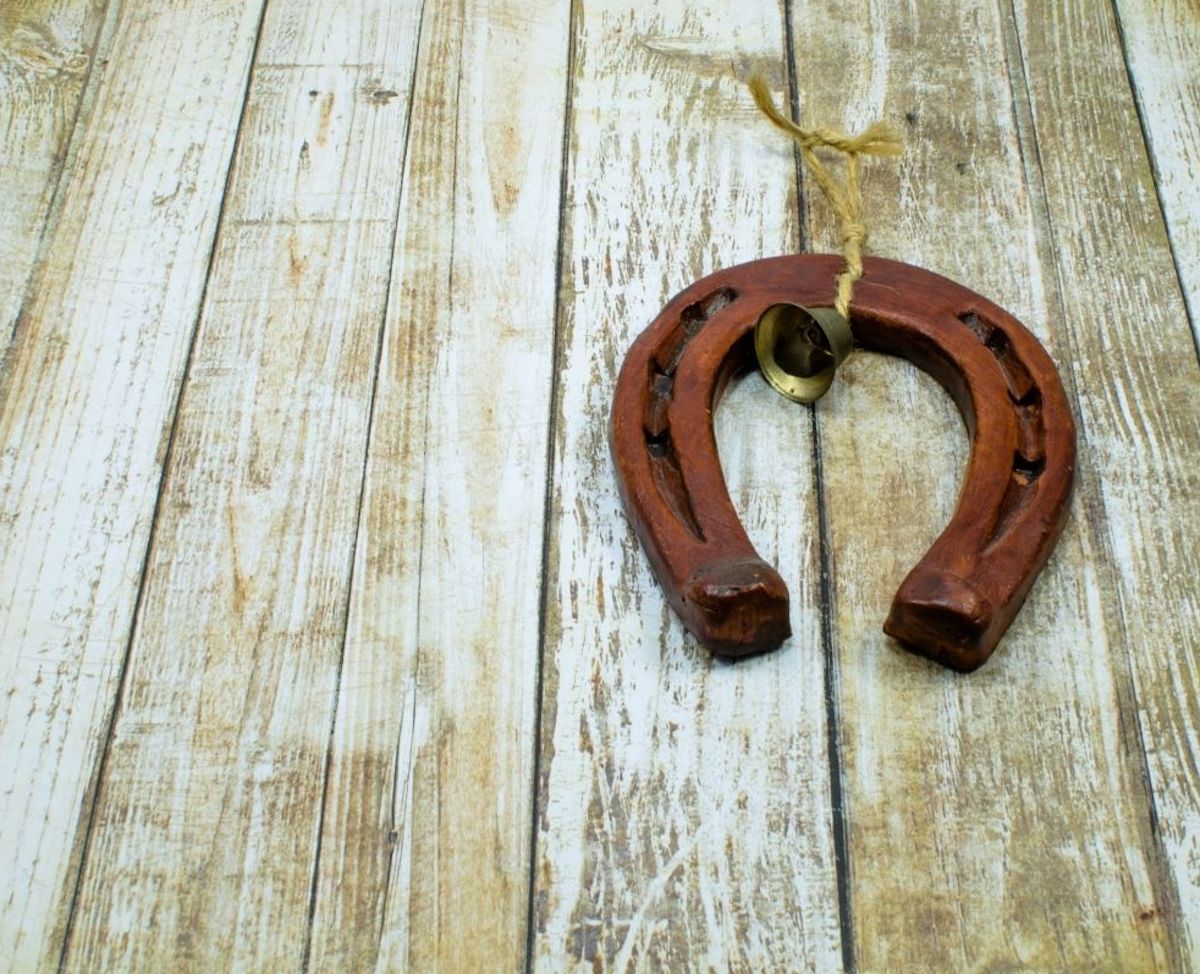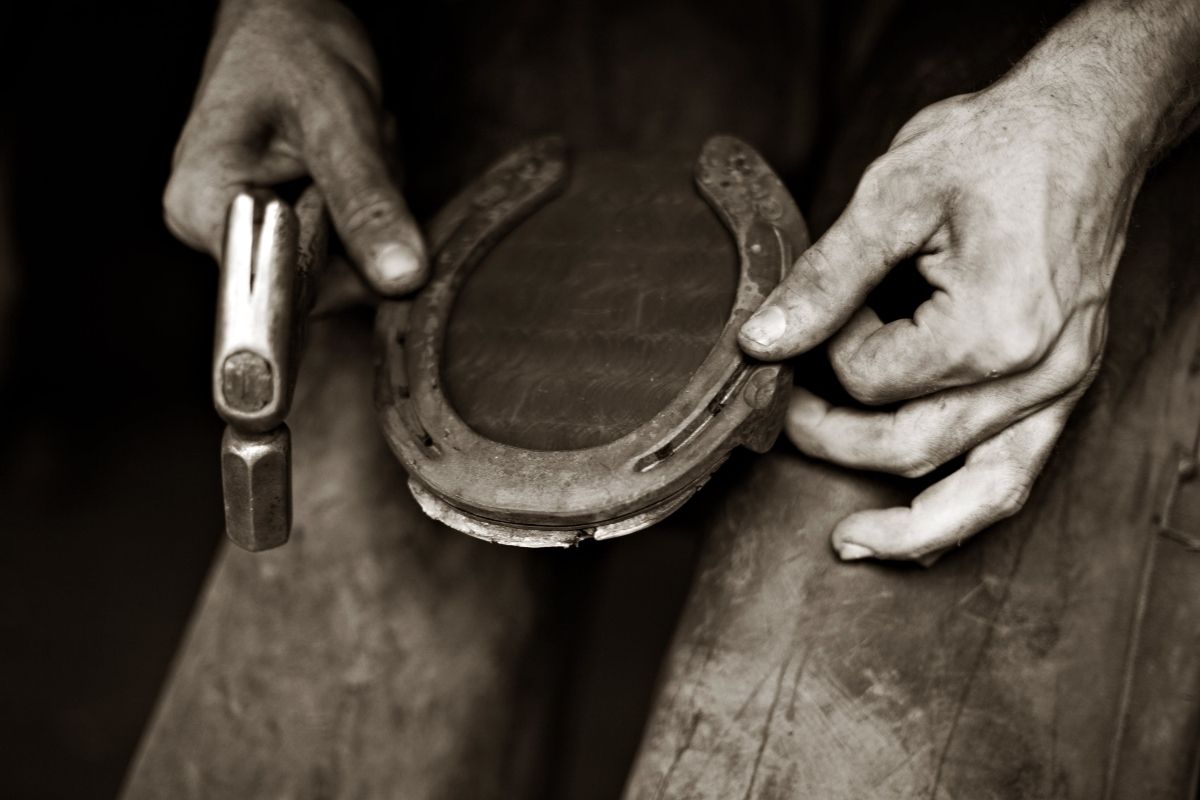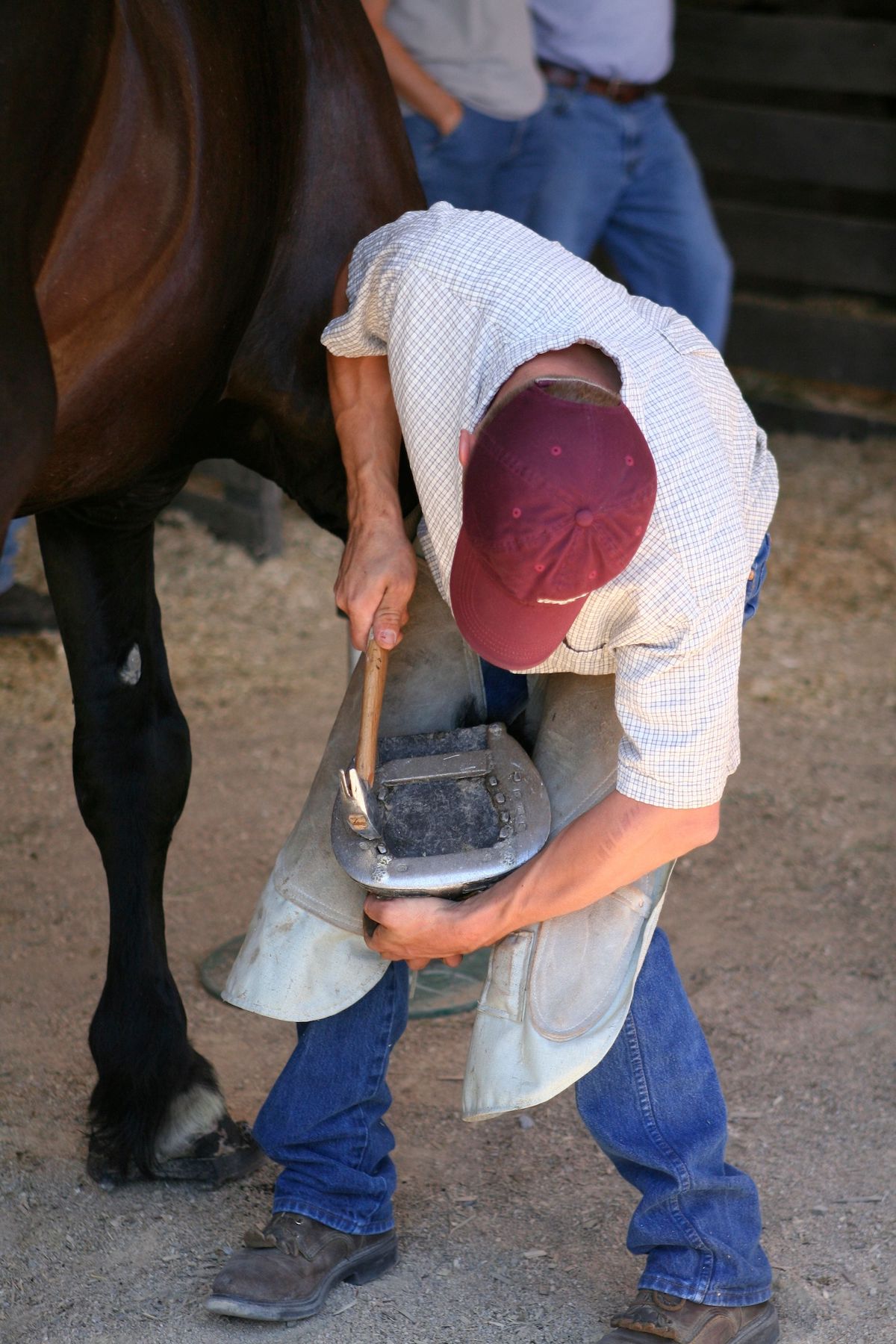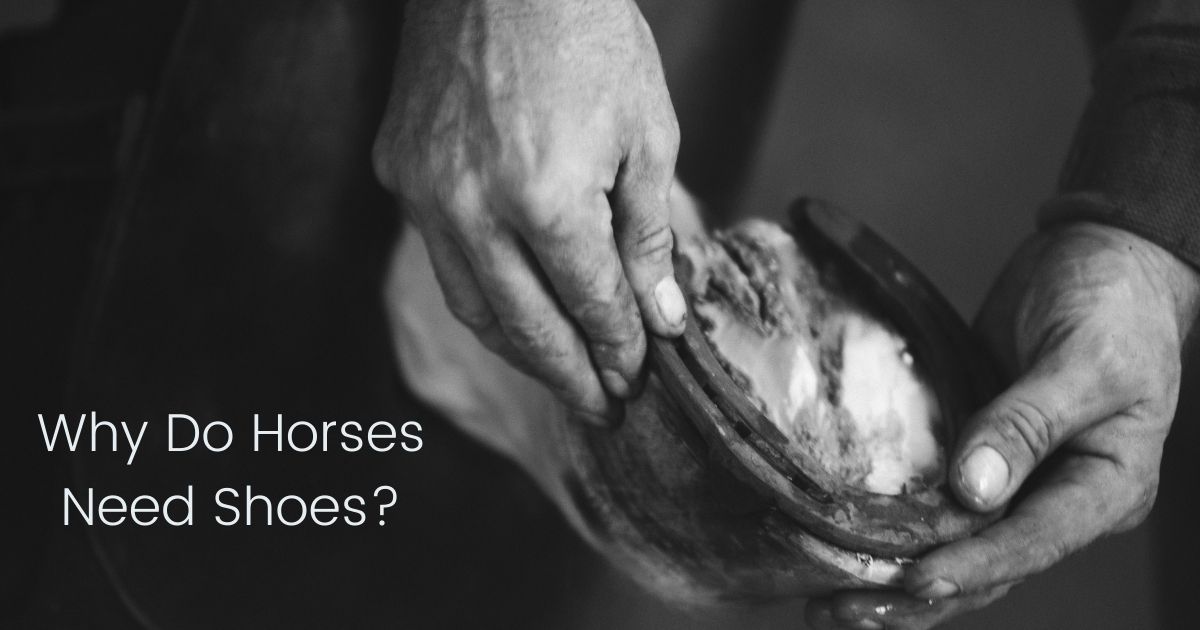The Horseshoe – More Than a Symbol of Good Luck
Even if you don’t ride horses, or know much about them, chances are you know what a horseshoe is at the very least. So why do horses need shoes? Horseshoes are a U-shaped plate that is designed to protect and supplement a horse’s natural hoof. Horseshoes have been around for centuries, and they help allow a horse to perform tasks that they may not be able to do without them.
Traditionally seen as a symbol of luck, there is some debate around how a horseshoe should be hung. Whether you think the ends should be pointing up or down, one thing we do know is that if you want to know more about horseshoes, read on.

Why Do Some Horses Wear Shoes?
Not every horse wears shoes, and two horses completing similar tasks may not both be wearing shoes. A horse with horseshoes attached is “shod.” Shoes are typically applied to strengthen and protect the hooves and feet and prevent the hooves from wearing down.
Horse hooves are made of keratin, the same protein that we have in our fingernails and hair.
Like our nails, horse hooves continue to grow. In the wild, horse hooves will wear down as they walk, but this isn’t always the case with domesticated horses. Horses that people keep require regular maintenance to keep them in good working order. In some cases, this involves the horse being shod.
As mentioned above, some horses wear shoes, and others don’t. This is often an individual decision that depends on the horse.
Horses that compete in events like racing, cross country, and jumping may benefit from shoes. If horses need to walk in slippery or icy terrain, shoes can help provide grip. Horses with health conditions such as balance issues, laminitis, or arthritis may also need shoes to help them recover.
In some cases, shoes may also improve performance. Many different types of shoes can suit specific circumstances. It’s not one shoe fits all (pun intended).
Do Horses Need to Wear Shoes?
In general, horses do not need to wear shoes. It often comes down to the individual horse and its intended use. Some people are passionate about not shoeing horses, other people will use them on a case-by-case basis, and others will always shoe their horses.
It can be argued that most leisure horses do not require shoeing, and regular trimming and shaping with a healthy diet and supplements are adequate to maintain good hoof and leg health.
Other times, it may be detrimental to a horse not to wear shoes, especially if they are walking on a stone surface where stones could damage their foot base. Traction devices can also be added to shoes such as studs and heel caulks, which can aid a horse walking on slippery terrain. In addition, horses with medical conditions may need to be shod temporarily as they heal. Conditions such as laminitis may benefit from shoeing.
If a horse does not wear shoes, it will still require regular maintenance with hoof trimming and shaping by a farrier. A farrier is a person whose job is to maintain hoof health, a well-experienced, qualified farrier is essential to help maintain a horse’s hooves, and they can advise on whether a horse needs to be shod or not.
Horseshoeing can be a surprisingly controversial topic, but it’s not surprising equine enthusiasts would be passionate, as their love of horses is strong, and they want to do what’s best. The topic can be nuanced, and ultimately it is the owner’s decision, together with their vet and farrier, to make the best decision for each horse.
The Pros and Cons of Horse Shoeing
When deciding whether a horse needs shoes, a lot of factors need to be taken into consideration. Some pros and cons of horseshoeing are listed below:
Pros
Protection
If the horse is living and working in an environment that can damage the hoof and foot, shoes can help prevent this. For example, hard, stoney ground can cause injuries such as bruising, controlled with shoes.
If the environment can be changed or it is only temporary, this would be better than relying solely on shoes to help the horse. Temporary solutions such as hoof boots or taped- or glued-on shoes can work well until the horse is brought to a more suitable environment.
Aiding in Performance
Horseshoes can enhance performance in certain circumstances. For example, horses working in snowy or icy conditions may benefit from shoes that help prevent snow from building up on their hoof and provide traction, so they don’t slip.
Horses that repeatedly jump, such as show jumpers or eventers, can benefit from shoes when they help with the repeated forces on the hoof, and shoes can also provide increased traction.
Helping With Conformation and Medical Conditions
Horses with poor conformation, such as uneven gait or weak hooves, may develop uneven wearing, which can be dangerous. Shoeing can help with this, but it is essential to understand that an experienced farrier may achieve similar results with careful shaping rather than relying on shoes.
Slower Wear
Horses used for weight-bearing tasks, such as carriage pulling, may benefit from shoes, and their hooves would wear down very quickly without shoes.
Cons
Expensive
Shoeing requires regular visits by a farrier to remove, reshape and reapply shoes to make sure they fit the horse’s feet correctly. This skill requires experience, and it can be expensive to pay for an experienced farrier to come regularly and shoe your horse.
Horses with medical conditions or requiring specialist shoes can be even more expensive due to specialist equipment or more regular visits.
Increased Risk of Injury
If an experienced farrier isn’t used or the shoes are left on too long, there can be severe damage to the hoof and the leg.

The Benefits and Drawbacks of Going Barefoot
Just like shoeing a horse has pros and cons, so too does going barefoot; these are listed below:
Benefits
More Cost-Effective
Without shoes, a horse may require fewer regular visits from the farrier, and shaping takes less time and less equipment, saving a lot of money.
Enhanced Performance
Some horse owners feel that barefoot benefits their horses by preventing injury and enhancing performance. This is especially true for dressage horses, which work in an arena.
More Natural
Before being domesticated, all horses would not wear shoes, meaning they would not naturally be shod. Therefore, some equestrians feel it is unnecessary to change the hoof that was evolved to function for horses.
Drawbacks
Increased Risk of Injury
Just like with shoeing, a horse without shoes can also be at increased risk of injury in certain circumstances. Walking on slippery or stoney surfaces without shoes can lead to damage, which could be avoided with shoes.
More Hoof Maintenance
If a hoof is in bad condition or needs to be repaired, it could take longer to correct without shoeing. This may involve more intensive shaping and more regular visits by a farrier.
Extra Protection May Still be Needed
Even without shoes, some horses may benefit from temporary shoes or boots in certain situations, such as competing in muddy conditions or icy ground.
The Process of Horse Re-Shoeing Explained
A farrier will perform re-shoeing on horses. This is a process that requires experience and should not be performed by a beginner. Special equipment is also needed, such as a forge. The process will typically begin with the removal of the old shoes. To start with, the nails will be removed to allow the shoe to be removed with pincers.
Once the old shoe is off, the farrier will check the hoof, trim off new growth, and shape the hoof to its ideal shape. A good farrier will consider the whole horse and ensure the hoof is in the best condition to provide good conformation.
Once the hooves are trimmed and shaped, the horseshoe is placed on the foot to inspect its shape. Horseshoes are often reused until they are no longer in good condition, at which point new shoes will be used.
To further shape a shoe, the farrier may use a forge. This is a scorching oven that helps soften the metal enough to be hammered into a better shape -this is called hot shoeing. Cold shoeing is where the shoe is shaped without the use of a forge.
Shoes may be selected for unique properties, such as extra cushions for damaged feet or holes to attach studs. The farrier will consult the owner on what they need before attaching the shoes.
Once the shoes are shaped, they will be attached back to the hoof using nails. Although this sounds painful, it actually isn’t as the nails are passing through the part made of keratin, just like how cutting our nails doesn’t hurt.
How Often Should a Horse be Reshod?
Usually, a horse will need to be reshod every six weeks, as this is how long it takes the hoof to grow before it gets too long and starts to cause problems. However, there are circumstances where horses may need their shoes reset sooner than six weeks.
Examples of when a horse needs resetting include: a shoe has come off or is loose, the nails are shifting and loose, the shoe has become twisted or damaged, or when the horse is lame (limping).
If you are concerned your horse needs to be reshod, contact your farrier for advice. In cases of extreme pain, contact your vet urgently, they may recommend a farrier visit, but pain needs to be addressed by a veterinarian also as it could be caused by more than problems with shoes.
How Will I Know If My Horse Needs Shoes?
Deciding on whether to shoe your horse or not will take some careful consideration. It is crucial to consider the type of work your horse will be doing, their conformation, any health problems they have, and what has worked for the horse previously.
A horse bought as an adult may already be shod, in which case you may consider continuing this if the work is going to be similar. However, a horse may have been shod previously without much consideration as to whether they need shoes or not; it may be something that can be discussed with your farrier at the next visit.
Advice from your farrier and veterinarian is key to any health consideration you make for your horse. Make sure to have your horse examined so that advice on how shoeing or going barefoot may impact your horse and help you come to a decision.
Ultimately deciding whether to shoe your horse or not is a personal decision and will eventually depend on what your horse needs, not what would suit you best.

Transitioning Between Shodding and Barefoot
Some owners may decide they want to stop their horse from wearing shoes. This could be for a short time or permanent.
After consulting with your veterinarian and farrier and confirming that your horse can tolerate being barefoot, the process of going barefoot can begin. It can take time as the hoof will face different forces and will need to adapt to this. Although the farrier can start to shape the hoof to begin the switch, most feet will be able to adapt to being barefoot.
Look out for the American Association of Professional Farriers and the American Farrier’s Association to find a farrier. Farriers who are accredited with these organizations will meet certain standards, crucial to understanding horse’s hooves.
Depending on your horse’s hooves, the process from shod to barefoot could be quick or slow and may require booting to help support the feet during the transition.
If shoes are going to be removed during a break from work, it is vital that this break is at least six to 12 weeks long. This is because nails are placed to hold the shoes in place. When these nails are removed, the holes remain until they grow out.
Trying to replace a shoe on a horse that has holes that are only partially grown out can cause chipping and breaking and make the shoeing process more difficult. If your horse is only going to be on holiday for a few weeks, it may be best to keep them shod, chat to your veterinarian and farrier for advice on this.
Ultimately, whether you choose to shoe your horse or not, looking after your horse’s hooves is crucial to your horse’s health and requires a lot of time and attention. There is a common phrase in the equine industry, “no hoof, no horse,” which helps explain the importance hooves are to the well-being and function of horses.
Make sure to do your research and select a farrier and veterinarian with experience in managing a horse’s hooves and make sure to take care of your horse’s hooves, shoes or not.
